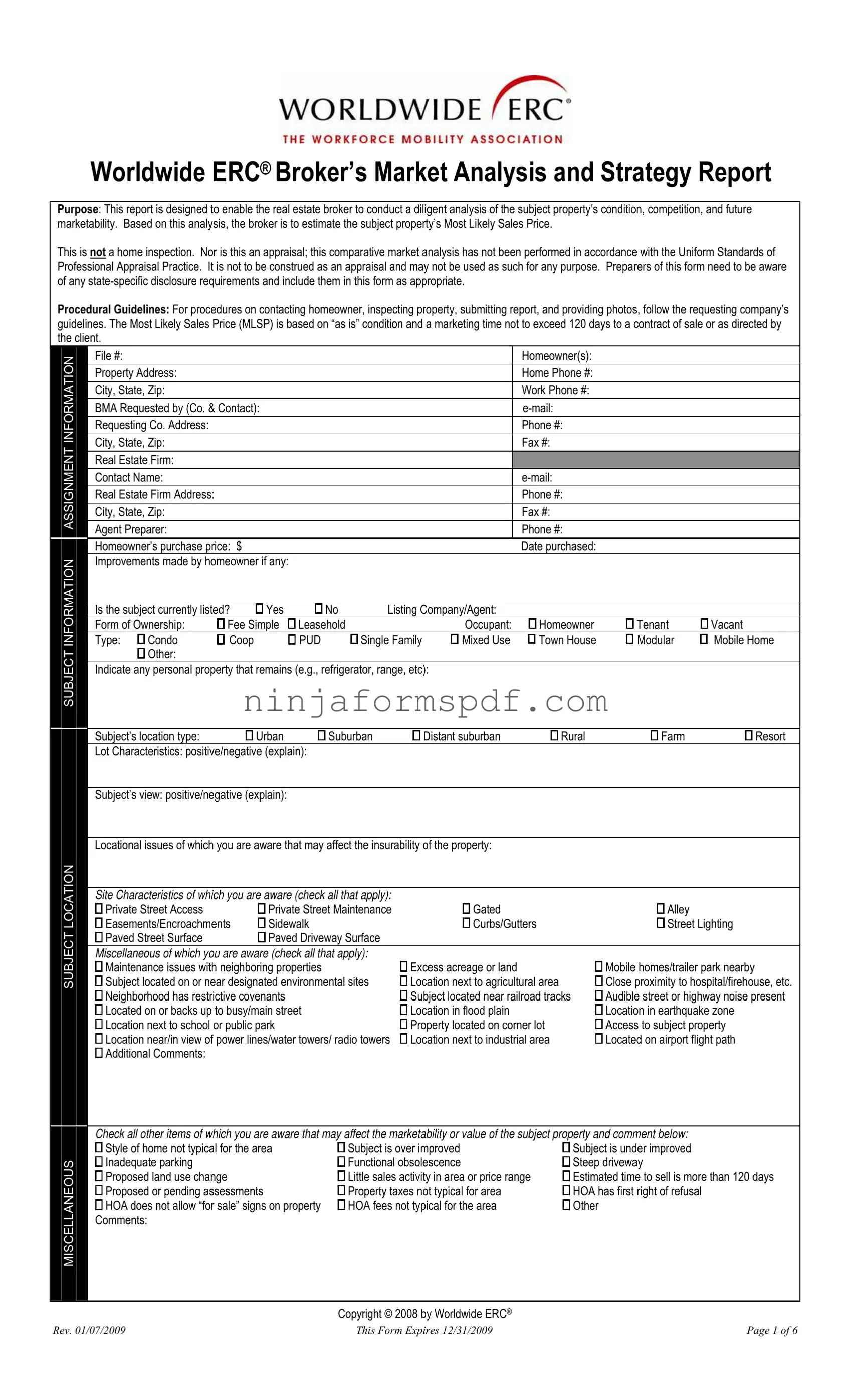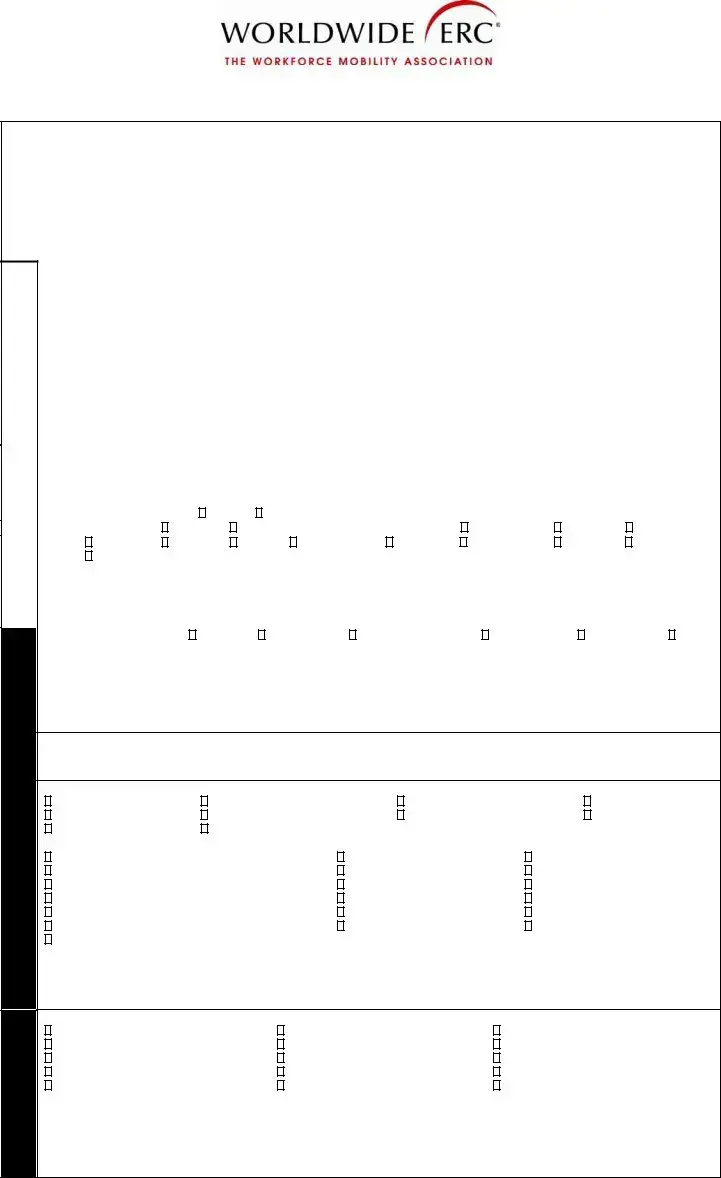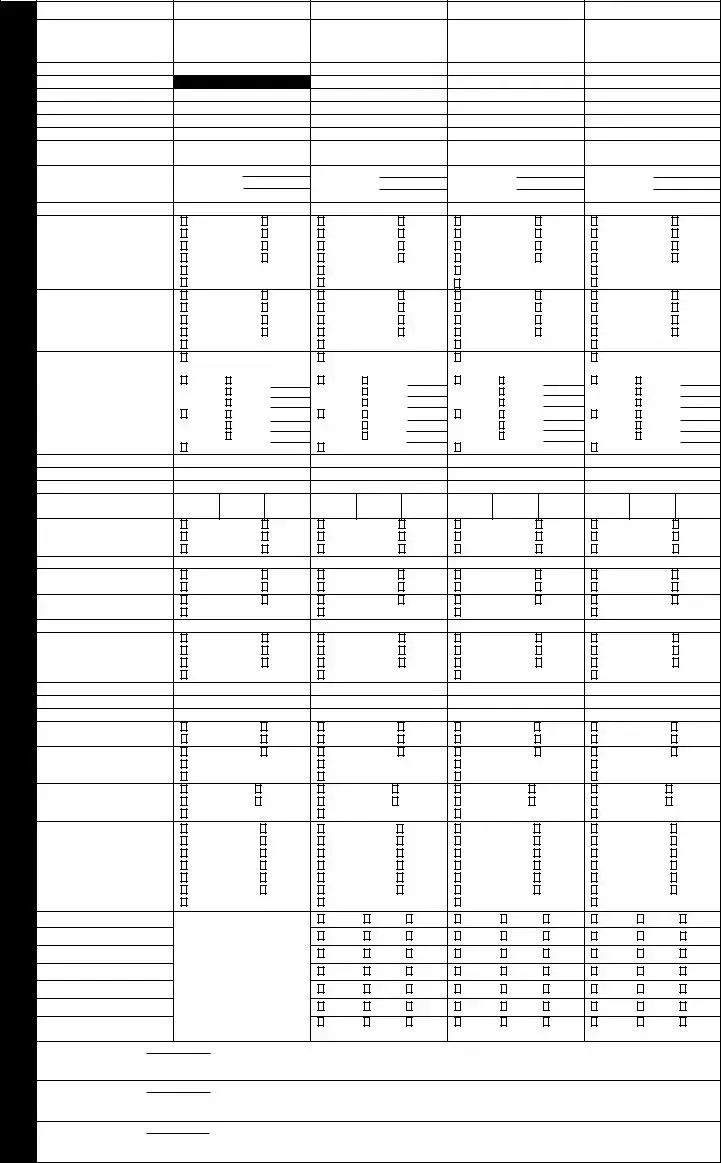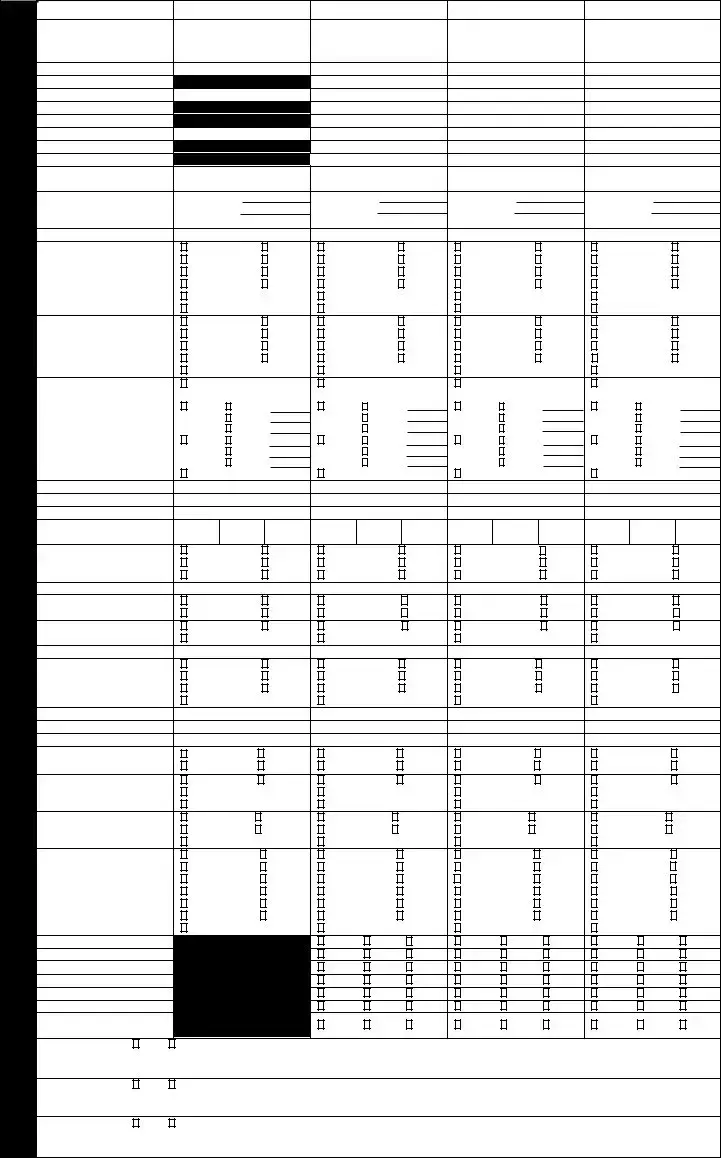The Comparative Market Analysis (CMA) report from a real estate broker closely resembles the Worldwide ERC® Broker's Market Analysis form in its purpose and content. Both documents are geared to assess a property's market value by comparing it to similar properties in the area. They examine aspects such as location, condition, size, and amenities, though the ERC form includes a broader array of details, such as the property's submission procedure and marketing strategy recommendations.
A Home Inspection Report, although distinct in its primary focus, shares some similarities with the ERC form, particularly in the scrutiny of a property’s condition. While the ERC form dabbles lightly in property condition as one element influencing marketability and value, the Home Inspection Report dives deep into the property's physical state, identifying potential issues that could affect its sale or valuation.
The Real Estate Appraisal Report provides a professional's opinion on the value of a property, much like the most likely sales price estimate in the ERC form. However, appraisals adhere strictly to the Uniform Standards of Professional Appraisal Practice (USPAP) and are more formal, often required by lenders to secure a mortgage. The ERC form, conversely, is not considered an official appraisal but rather a market analysis tool.
The Listing Agreement between a homeowner and a real estate agent also shares traits with the ERC’s form, specifically in terms of marketing strategies. While the ERC form suggests marketing tactics based on the property analysis, the listing agreement sets the contractual basis for promoting and selling the property, including commission rates and listing duration.
Property Disclosure Statements that sellers are often required to provide in real estate transactions have a common ground with the ERC form's section on inspections and disclosures. Both documents deal with revealing the condition of the property, including any known issues or defects, to inform potential buyers and aid in the transparency of the sale.
The Purchase Offer, or sales contract, while fundamentally a document signaling a buyer's intent to purchase, converges with the ERC form in its reliance on accurate property analysis. The ERC form's estimated market value aids in setting a realistic offer price, grounded in the comparative market analysis.
An Exclusive Right to Sell Listing is an agreement granting a specific real agent the exclusive rights to sell a property, which is related to the marketing and sales strategy part of the ERC form. Both documents encompass the understanding that a well-represented property, backed by thorough analysis, can achieve an optimal sales outcome.
Lease Agreements, while primarily used for rental arrangements, intersect with the ERC form in terms of property condition and value assessments. Understanding the current market value and state of a property can inform lease terms, rent pricing, and maintenance responsibilities.
Homeowners Association (HOA) Documents, particularly those detailing rules, assessments, and fees, parallel the ERC form's sections on property location and miscellaneous issues that may affect marketability. Both sets of documentation emphasize factors external to the property itself but critical in influencing its value and desirability.
The Pre-listing Home Preparation Guide, often provided by real estate agents to sellers, complements the ERC form’s focus on maximizing a property’s marketability. Recommendations for repairs, renovations, and staging found in such a guide are aimed at improving property condition and appeal, reflecting the ERC form's assessment of repair needs and improvement suggestions.
A Mortgage Pre-approval Letter, while a document from a potential buyer’s lender indicating loan amount eligibility, relates to the ERC form’s section on financing. Understanding the probable means of financing for a property can shape the marketing and negotiation strategies, ensuring a smoother sales process.






